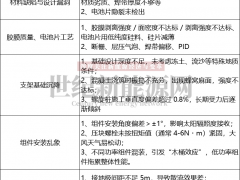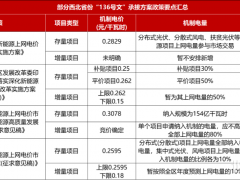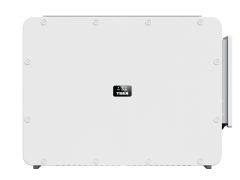本月初美国能源部部长朱棣文宣布了“屋顶光伏挑战”(SunShot Rooftop Challenge)项目获奖名单。普尼作为本次22个获奖单位中为数不多的企业代表获此殊荣,并得到美国能源部约86万美元的资金资助。在这个项目里,普尼及其伙伴将致力于建立集中性的网络资源中心与太阳能热线,通过优化区域新能源推广模式大大推动包括加州、犹他州、科罗拉多州和内华达州在内的西南部光照资源丰富地区的光伏市场发展速度。
这是普尼第二次荣获美国能源部的奖励,是对普尼商业模式和技术水平的又一次认可。普尼将继续加强在新能源领域的技术、经验和资源的全球积累,更好的为中外客户服务。
关于普尼:普尼是一家世界领先的提供太阳能解决方案的跨国公司。普尼的客户包括像华盛顿、旧金山那样的低碳城市,希望通过新能源实现节能减排的政府及企业,大型太阳能电 站开发商,和像军方那样对太阳能有特殊需求的群体。普尼的优势在于能够整合、调动整个产业链的资源,把世界上最先进的经验和技术用来满足客户的需求。普尼掌握多种最前沿的太阳能核心技术,并把基于这些技术的产品和服务作为客户解决方案的组成部分。公司拥有在不同国家的多样化系统集成经验,累计达上百兆瓦。 普尼在美国和中国运营,并与美国国家可再生能源实验室(NREL)、世界资源研究所(WRI)、北京大学等著名机构合作,携手开发清洁能源,建设清洁世界。普尼的网站是www.optony.com。
美国能源部网站上列出了普尼和其他获奖者的名单:http://energy.gov/articles/sunshot-rooftop-challenge-awardees。
(下文是美国能源部的新闻稿中文翻译,英文原文附后。)
2011年12月1日,作者:金尼.西蒙,美国能源部
民用或商用太阳能发电站的成本多达40%都不是“硬性成本”,而是来自复杂的“软性成本”,例如审批、区域规划和光伏系统并网。事实上,今年年初SunRun发布的一份报告显示,仅仅地方审批流程这一项就给美国每户住宅的光伏安装增加了2500多美元的成本。使事情更复杂的是,这些审批流程不仅繁琐,而且每个地区都不一样。
降低这些政策性壁垒是太阳能能够与其他能源去竞争的关键。为了促进改变,美国能源部部长朱棣文今天宣布要奖励1200万美元给获胜美国能源部举办的“屋顶光伏挑战”的22个团队。
遵循奥巴马总统提出的“跑到最前面”的模式,每一个团队要努力减少政策性成本,以促使美国使用太阳能变得更加容易。团队们从明年开始有步骤地开展行动,包括规范光伏项目审批流程,更新区域规划与规范,改良从太阳能发电到上网的标准,以及增加融资渠道。

上面地图(摘自能源部网站,部分显示,中间大圆是普尼,Optony Inc.)详细标注了这22个团队的所在区域位置,每个团队正在做的项目和已经获得的奖金数额。所有项目总计将惠及5100万美国人。
举几个例子:纽约城市大学团队的目标是通过建立多机构的网络门户把市级审批流程的时间从一年降至100天;佛罗里达州布劳沃德郡团队计划废除当地限制太阳能安装的一些条例,并且建立统一的网上审批与内部联络系统来减少成本和等待时间;此外,马萨诸塞州团队计划在5个社区开展试点,从而制定能被应用推广的最佳方案,也能够解决民用安装光伏系统的财务困难。
屋顶光伏挑战项目是能源部“太阳计划”(SunShot Initiative)的一部分。“太阳计划”的目的是在10年内让太阳能与其它任何一种能源相比具有成本竞争优势,这也是美国能源部为了增加本国太阳能的有效利用和让美国成为全球快速增长的光伏市场领导者的大布局的一部分。
能源部部长朱棣文说:“通过这个项目,能源部靠资助这些团队挖掘了美国太阳能市场的潜力,使全美投资和应用太阳能变得更加迅速、便捷和低成本。这些团队能够降低民用和商用光伏系统的成本,同时为面临预算紧张的地方政府节约了资金和时间。”
(下文是美国能源部的新闻稿英文原文。)
Rooftop Solar Challenge to Cut Solar's Red Tape
December 1, 2011
Ginny Simmons Managing Editor for Energy.gov, Office of Public Affairs
Up to 40 percent of the cost of installing solar panels onto your home or business isn't related to hardware at all, but rather due to complications from "soft costs," like permitting, zoning, and hooking your system up to the power grid. In fact, according to a report released earlier this year by SunRun, local permitting and inspection processes alone add more than $2,500 per residential installation nationwide. To add to the problem, permitting and other processes are often complicated and vary from jurisdiction to jurisdiction.
In order to make solar energy competitive with other types of energy, it will be critical to reduce these barriers. To spur change, Secretary Chu announced today $12 million in funding for 22 regional teams competing in the Energy Department’s "Rooftop Solar Challenge.”
Using President Obama's "Race to the Top" model, each of the teams will cut red tape to make it easier for Americans to go solar. Teams will implement step-by-step actions throughout the next year to standardize permit processes, update planning and zoning codes, improve standards for connecting solar power to the electric grid, and increase access to financing.
The map above details all 22 teams' locations, the projects each team will be undertaking, and the amount of funding they've been awarded. In total, their projects will cover a total population of more than 51 million Americans.
As examples, the team led by City University of New York aims to shorten the city’s approval process from one year to 100 days by creating an online multi-agency portal; the Broward County, Florida, team plans to remove local ordinances that create obstacles to solar installations and to create a unified online system for permitting and interconnection to reduce costs and wait time; and the Massachusetts team plans to use five pilot communities to determine best practices that can be replicated, as well as remove financing hurdles for homeowners.
The Rooftop Solar Challenge is part of the Energy Department’s SunShot Initiative, to make solar energy cost-competitive with any other form of energy by the end of the decade, and part of the Department’s larger effort to increase domestic solar deployment and position the U.S. as a leader in the rapidly-growing global solar market.
“Through this competition, the Energy Department is helping to unleash America’s solar potential by investing in projects that will make it faster, easier, and cheaper to finance and deploy solar power in communities across the country,” said Secretary Chu. “These awards will reduce the cost homeowners and businesses pay to install solar energy systems, while at the same time saving money and time for local governments faced with tight budgets.”
这是普尼第二次荣获美国能源部的奖励,是对普尼商业模式和技术水平的又一次认可。普尼将继续加强在新能源领域的技术、经验和资源的全球积累,更好的为中外客户服务。
关于普尼:普尼是一家世界领先的提供太阳能解决方案的跨国公司。普尼的客户包括像华盛顿、旧金山那样的低碳城市,希望通过新能源实现节能减排的政府及企业,大型太阳能电 站开发商,和像军方那样对太阳能有特殊需求的群体。普尼的优势在于能够整合、调动整个产业链的资源,把世界上最先进的经验和技术用来满足客户的需求。普尼掌握多种最前沿的太阳能核心技术,并把基于这些技术的产品和服务作为客户解决方案的组成部分。公司拥有在不同国家的多样化系统集成经验,累计达上百兆瓦。 普尼在美国和中国运营,并与美国国家可再生能源实验室(NREL)、世界资源研究所(WRI)、北京大学等著名机构合作,携手开发清洁能源,建设清洁世界。普尼的网站是www.optony.com。
美国能源部网站上列出了普尼和其他获奖者的名单:http://energy.gov/articles/sunshot-rooftop-challenge-awardees。
(下文是美国能源部的新闻稿中文翻译,英文原文附后。)
2011年12月1日,作者:金尼.西蒙,美国能源部
民用或商用太阳能发电站的成本多达40%都不是“硬性成本”,而是来自复杂的“软性成本”,例如审批、区域规划和光伏系统并网。事实上,今年年初SunRun发布的一份报告显示,仅仅地方审批流程这一项就给美国每户住宅的光伏安装增加了2500多美元的成本。使事情更复杂的是,这些审批流程不仅繁琐,而且每个地区都不一样。
降低这些政策性壁垒是太阳能能够与其他能源去竞争的关键。为了促进改变,美国能源部部长朱棣文今天宣布要奖励1200万美元给获胜美国能源部举办的“屋顶光伏挑战”的22个团队。
遵循奥巴马总统提出的“跑到最前面”的模式,每一个团队要努力减少政策性成本,以促使美国使用太阳能变得更加容易。团队们从明年开始有步骤地开展行动,包括规范光伏项目审批流程,更新区域规划与规范,改良从太阳能发电到上网的标准,以及增加融资渠道。

上面地图(摘自能源部网站,部分显示,中间大圆是普尼,Optony Inc.)详细标注了这22个团队的所在区域位置,每个团队正在做的项目和已经获得的奖金数额。所有项目总计将惠及5100万美国人。
举几个例子:纽约城市大学团队的目标是通过建立多机构的网络门户把市级审批流程的时间从一年降至100天;佛罗里达州布劳沃德郡团队计划废除当地限制太阳能安装的一些条例,并且建立统一的网上审批与内部联络系统来减少成本和等待时间;此外,马萨诸塞州团队计划在5个社区开展试点,从而制定能被应用推广的最佳方案,也能够解决民用安装光伏系统的财务困难。
屋顶光伏挑战项目是能源部“太阳计划”(SunShot Initiative)的一部分。“太阳计划”的目的是在10年内让太阳能与其它任何一种能源相比具有成本竞争优势,这也是美国能源部为了增加本国太阳能的有效利用和让美国成为全球快速增长的光伏市场领导者的大布局的一部分。
能源部部长朱棣文说:“通过这个项目,能源部靠资助这些团队挖掘了美国太阳能市场的潜力,使全美投资和应用太阳能变得更加迅速、便捷和低成本。这些团队能够降低民用和商用光伏系统的成本,同时为面临预算紧张的地方政府节约了资金和时间。”
(下文是美国能源部的新闻稿英文原文。)
Rooftop Solar Challenge to Cut Solar's Red Tape
December 1, 2011
Ginny Simmons Managing Editor for Energy.gov, Office of Public Affairs
Up to 40 percent of the cost of installing solar panels onto your home or business isn't related to hardware at all, but rather due to complications from "soft costs," like permitting, zoning, and hooking your system up to the power grid. In fact, according to a report released earlier this year by SunRun, local permitting and inspection processes alone add more than $2,500 per residential installation nationwide. To add to the problem, permitting and other processes are often complicated and vary from jurisdiction to jurisdiction.
In order to make solar energy competitive with other types of energy, it will be critical to reduce these barriers. To spur change, Secretary Chu announced today $12 million in funding for 22 regional teams competing in the Energy Department’s "Rooftop Solar Challenge.”
Using President Obama's "Race to the Top" model, each of the teams will cut red tape to make it easier for Americans to go solar. Teams will implement step-by-step actions throughout the next year to standardize permit processes, update planning and zoning codes, improve standards for connecting solar power to the electric grid, and increase access to financing.
The map above details all 22 teams' locations, the projects each team will be undertaking, and the amount of funding they've been awarded. In total, their projects will cover a total population of more than 51 million Americans.
As examples, the team led by City University of New York aims to shorten the city’s approval process from one year to 100 days by creating an online multi-agency portal; the Broward County, Florida, team plans to remove local ordinances that create obstacles to solar installations and to create a unified online system for permitting and interconnection to reduce costs and wait time; and the Massachusetts team plans to use five pilot communities to determine best practices that can be replicated, as well as remove financing hurdles for homeowners.
The Rooftop Solar Challenge is part of the Energy Department’s SunShot Initiative, to make solar energy cost-competitive with any other form of energy by the end of the decade, and part of the Department’s larger effort to increase domestic solar deployment and position the U.S. as a leader in the rapidly-growing global solar market.
“Through this competition, the Energy Department is helping to unleash America’s solar potential by investing in projects that will make it faster, easier, and cheaper to finance and deploy solar power in communities across the country,” said Secretary Chu. “These awards will reduce the cost homeowners and businesses pay to install solar energy systems, while at the same time saving money and time for local governments faced with tight budgets.”
 微信客服
微信客服 微信公众号
微信公众号









0 条